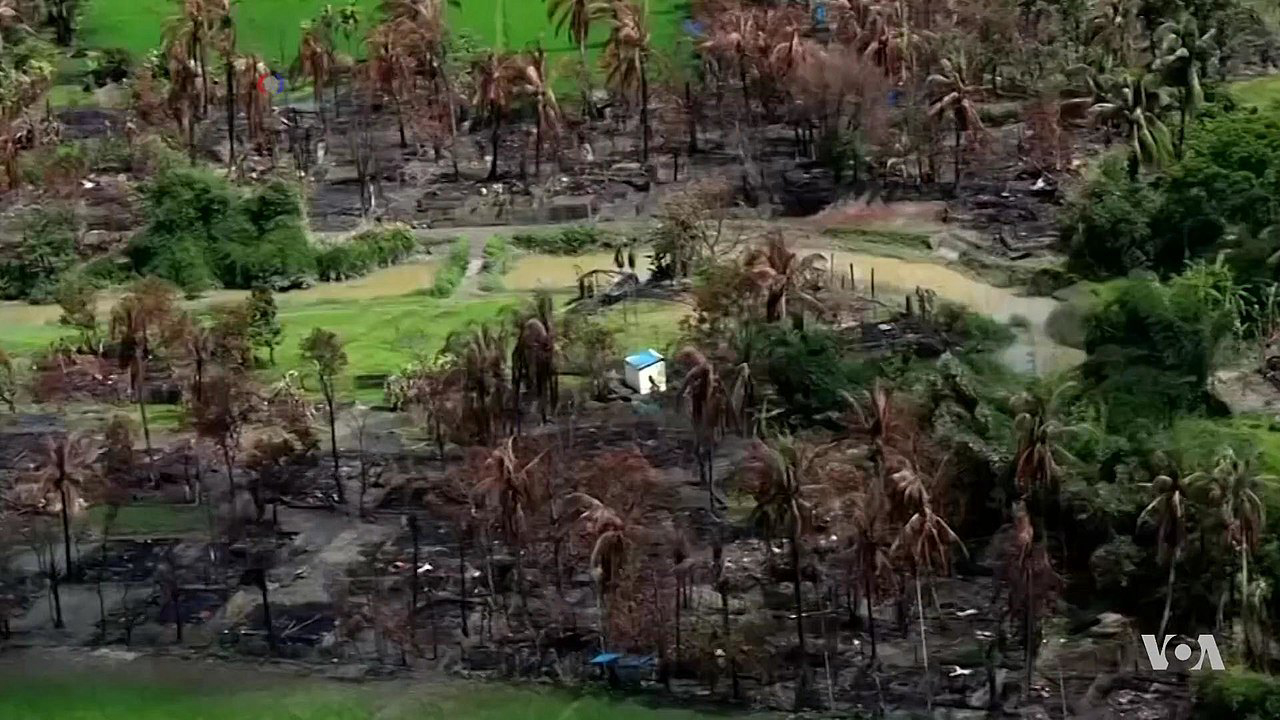
Burned Rohingya village in Rakhine state, Myanmar - September 2017
Image Credit: en.wikipedia.org
A slight remembrance of our history should be sufficient to prove that we humans are in love with hate. The battles and the violence perhaps implanted in our genes or emerged as a result of evolving civilisation and it has fascinated several humans trying to obtain a command on society.
A specific region in our world has been a scapegoat of human warfare, violence and injustice. It has seen violence since centuries. This place is the largest of the mainland Southeast Asian states by area, and it is named as ‘Burma’ or ‘Myanmar’. It is mainly bordered by Bangladesh, India, China and Thailand. Burma's official full name is the "Republic of the Union of Myanmar”. The country's name Myanmar is derived from the earlier Burmese ‘Myanmar’, a tag for the majority Bamar racial group of the area. The term ‘Burma’ is popularly believed to emerge from ‘Brahma Desha’ after ‘Lord Brahma’ and also from "Bamar", the casual form of the community's name. But the prominent name of the country has been a matter of conflict and debates, mainly in recent decades. The country struggled additionally in the British era because it was an integral part of the British Empire. The British detached Burma province from British India in 1937 and allotted the colony a new constitution calling for a new fully elected assembly.
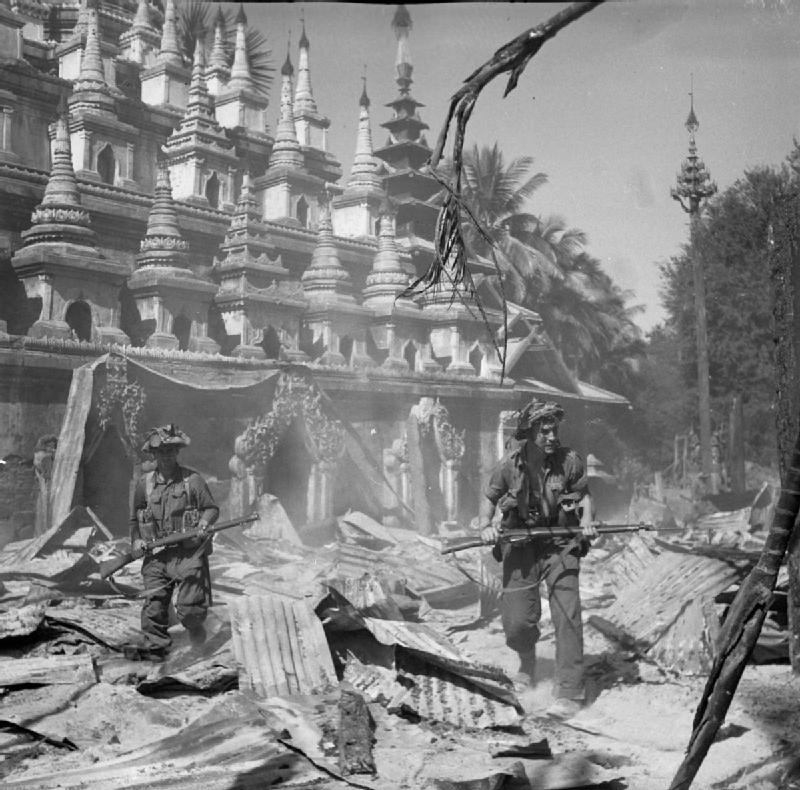
The British Army in Burma during the Second World War
Image Credit: en.wikipedia.org
But this asserted to be a vital issue as some Burmese felt that this was a tactic to exclude them from India.
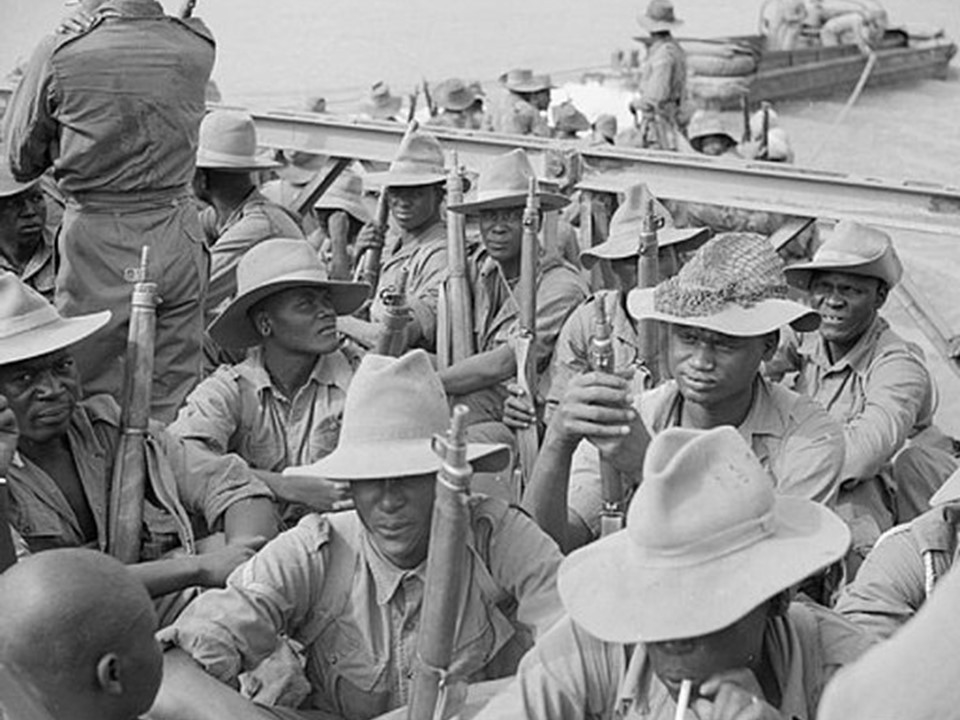
British Army to Burma
Image Credit: upload.wikimedia.org/wikipedia/commons
Things gone worse during the Second World War, when Japan seized Burma in January 1942, the British who had been moved out of the region began the fight to reclaim it. The primary motive of the Japanese attack of Burma was to cut the Burma Road, the one surviving land supply route to China. The pitch to the invasion of Burma was the Japanese occupation of Thailand. Conflicts boiling in Burma before the war erupted during this Japanese invasion and Burma became the camp of the war. More than 20,000 Burmese were dead with more than 40,000 Rohingya losses (The Rohingya people are a stateless Indo-Aryan ethnic group who predominantly follow Islam and reside in Rakhine State, Myanmar). This war concluded in an extensive breakdown of civil administration and resulting in communal disputes. During this time, some 22,000 Rohingyas are speculated to have passed over the border into Bengal, then part of British India, to escape the violence. Defeated, 40,000 Rohingyas ultimately left for Chittagong after repeated massacres by the Burmese and Japanese forces. And the Japanese upswing provoked an inter-communal dispute between Muslims and Buddhists in the country. (Source - Wikipedia)
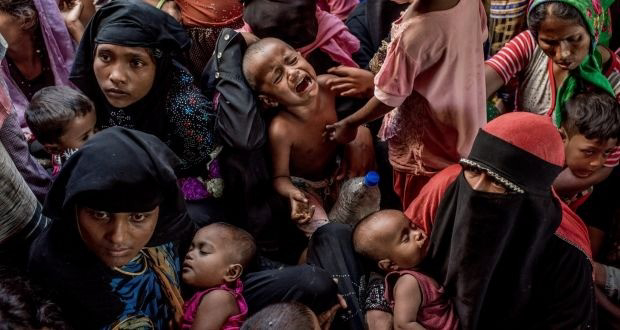
Image Credit: Irish Times
Even today the clouds of troubles are floating upon Burma with the cover of racial cleansing and religion. The communal disputes which were implanted by Japan are turning on in the province. According to BBC News, the government of Myanmar denies the Rohingya citizenship and even avoided them from the 2014 census, refusing to recognise them as a people.
Another mishap began on 25 August 2017 after ‘Rohingya Arsa’ militants launched deadly attacks on more than 30 police posts. Then for the response, the Burmese military is now carrying out a campaign of racial purification against Rohingya Muslims in northern Rakhine State. Abundant people have been massacred and hundreds of villages demolished, and numerous Rohingya people have escaped again to neighbouring Bangladesh. One of the military’s most disturbing action is mass sexual violence, with assorted numbers of women and girls brutally gang-raped by a few regime soldiers and rape was one of the directions that the Burmese military-operated their racial purification operations. This is very much a part of this military’s way of terrifying the Rohingya and making them feel helpless. As rape is obviously extremely traumatizing and it’s a violation of someone’s most private space with also affecting one’s memories and their sense of being safe. If this has been weakened, it’s much heavier for them ever to be able to return from it. So, it’s a cruel and influential method of racial purification, to a certain racial or religious group from a province. Local people witnessed a mass shooting, with soldiers launching rocket-propelled grenades with setting roofs on fire. Many of the villages burnt in chaos and complete terror. Soldiers shot villagers as they left. In other villages, people were gathered together and then women were raped, and men were shot or beaten.
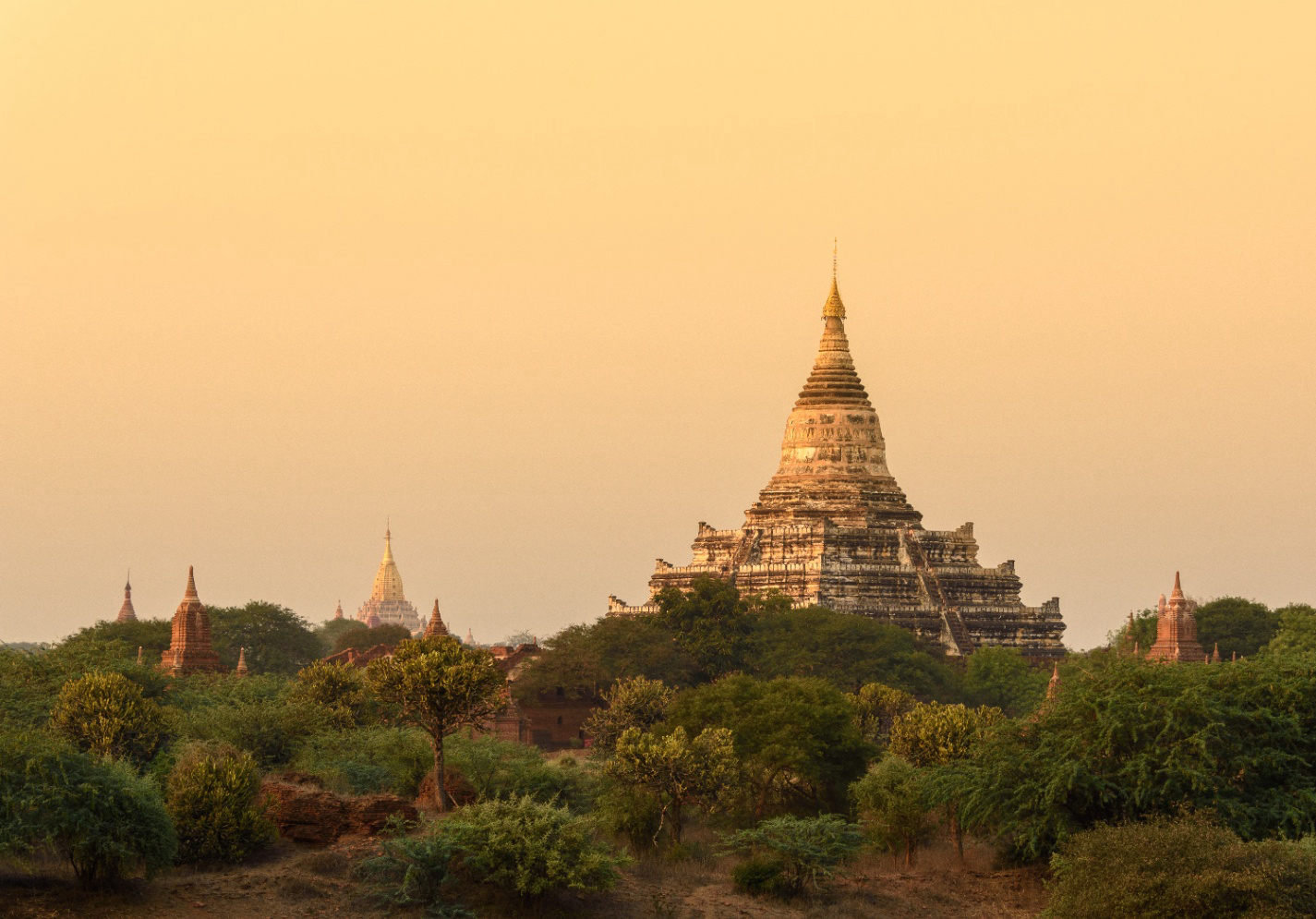
Myanmar Today
It is very disappointing and miserable to read and hear these awful incidences. But these are not just stories of victims of Burma, these are communities who have survived unbelievable and intolerable cruelty and trauma. After reading it, we realize something very critical about the dark side of ‘humanity’. For centuries, people have streamlined their belief of confusion between evil and good. And all of this makes us think about why humans are the most tolerant and intellectual species on the earth and the most violent and destructive at the same time. With tensions exploding across the globe, these stories have intentions for understanding our past, and probably our future as well.
